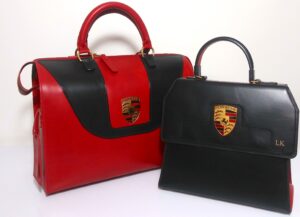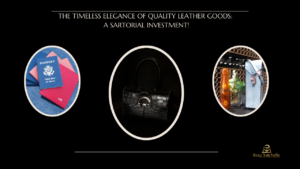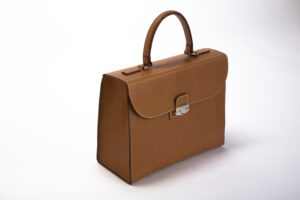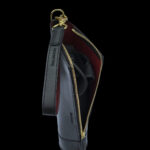Last week, we had the privilege of participating in a swell event that featured a number of the newest and hottest retail spots and restaurants in Downtown Detroit. We were honored to represent our display of leather wine carriers and wine journals that were created exclusively for the House of Pure VIN, Detroit’s signature wine retailer.
For Beau Satchelle, attending these events gives us the opportunity to gather feedback on the luxury products that T. Michael has created. Most reactions are that of astonishment at the craftsmanship of the products. “No way is this handsewn” is what I consistently hear from those who view our products. It is both humbling and confirming to T. Michael’s creative abilities.
So, at this event, one admirer asked about the artist’s learning curve to producing such works of art. As a witness to his growth, I can assure you it began with one stitch, followed by the repetition of a million of stitches. The concentration that an apprentice must possess to perfect a saddle stitch, which is one of the main techniques used to sew leather, is utterly remarkable. If you are ever privileged to watch a Master leather craftsman stitch leather, it looks quite effortless. Almost to the point that it looks easy. But because I seem to get the same question about his personal journey of learning his craft, I wanted to give some insight into the growth of a self-taught leather artisan.
T. Michael’s actually started his leather journey in college when he was unable to find quality belts that could fit within his budget. So, his next move was to visit the local leather store, pick up the necessary supplies and design belts, that to this day he still possesses.
Fast forward to 2012, when the attraction of leather once again urged him to learn the early art of leather crafting that used the basics tools; cutting board, knives, needles, thread, hammer, pricking iron and an awl. Relying on books, the internet, YouTube videos and the direction of Master French, English and Italian Leather Craftsmen across the globe, his raw talent was put to the challenge. With thousands of hours of training, there are distinctions of leather crafting that a layperson wouldn’t realize unless pointed out.
Depending on the type of leather, skins have to be handled differently. For instance kidskin leather is very supple yet can show lines if a crease from a bend is made but stitches smoothly and lays nicely on the leather with the right amount of tension. Suede, on the other hand, is extremely pliable and stitching needs a much lighter touch. Beautiful bridle cow leather is more rigid yet durable to be handled rougher. Tougher skins, like stingray, which has a hard shell like feel takes a delicate approach as it can create sharp edges when making holes thus causing the thread to shred or cut when going through.
Stitching rhythms have to also be learned. In a nutshell, this means learning how much tension can be placed on the thread so that the stitches can be perfectly lined up and ultimately not pull the leather. If the stitches are too tight, you will notice that the leather wrinkles and doesn’t lay flat.
There are certain tools used to create a bespoke leather good like the lines where the holes will be punched, etc. For example, A pricking tool or awl are the two tools needed to create holes through the skin for the thread. The closer the holes, the more precision is applied to the stitching process and will look more refined on a luxury product. Punching holes takes a lot of training and practice to ensure the stitches are straight and uniform.
Even the types of threads can impact the outcome of a finished product. Learning how much thread to prepare for sewing panels comes with understanding measurements. Types of thread can determine how the final product is finished. Man-made waxed nylon and polyester thread can be burned lightly to seal the ends. On the other hand, natural linen thread, which will not melt to seal the ends, has to be pulled intact back through the holes to secure the thread in place because of it’s natural characteristics. Beeswax is used to coat the thread to ensure an easier pull through the holes of the leather.
Another skill that must be learned is edge burnishing; it is the true raw edge finish for cut leather. If performed correctly, it seals out dirt and moisture from entering the leather. If you pay close attention to handcrafted leather products you will notice the edges are either rolled, covered with a small leather strip, kept raw or burnished. If burnished, the edges are very smooth and look like the leather has melted together. To get the edges to look seamless, sanding and edging tools are a necessity; either a handheld wood slicker, a multi-slot wood burnisher with drill bit attached or an electric edge burnisher tool ‘just to name a few’ can be used. There are many textures and colors of edge coating available and some are used to match the thread. However, depending on the creative eye of the designer, you can also finish your edges with beeswax for a more natural but shiny look. It is all a matter of preference and or the direction of the individual who wants a bespoke luxury good made to suite their personal taste. -AJ
Let us know your thoughts on social media!







